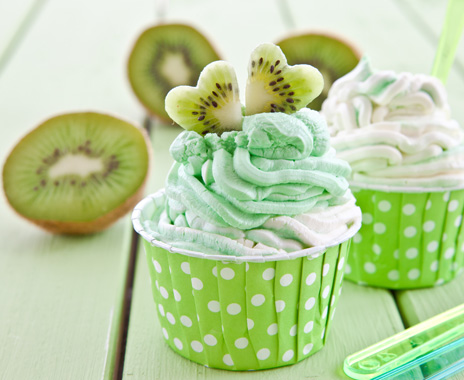In 2014, an intrepid reporter at Fortune magazine dared to ask in an article about the popularity of our nation’s longstanding favorite frozen dessert: “Do we still scream for ice cream?”
And back at her came a less-than-fervent reply: “Kind of.”
The magazine cited research from The NPD Group in revealing that while Americans were expected to eat ice cream on about 29 occasions that year, the figure in 1989 was more than 40 percent higher, at 41 occasions. That’s a lot of lost licks, even allowing for a certain margin of error in the survey. The culprit, commentators suggested at the time, was the rise of frozen yogurt and the health-conscious consumer. And certainly we at CCD Innovation see plenty of evidence that millions of consumers, and the CPG companies that serve them, are seeking ways to reconcile the desire for a decadent frozen treat with the need to monitor one’s calorie intake.
This soul-rending conflict is playing out in the frozen foods sections of grocery stores around the country. From brands like Arctic Zero—which touts its “fit frozen desserts” made with lactose-free, gluten-free, and GMO-free ingredients—to high-protein ice creams with brand names like Forte Gelato, Halo Top, and Wink, the healthier frozen dessert category is proving as ruthlessly competitive as the crowded retail frozen yogurt marketplace.
The good news for quick-serve concepts interested in exploring the realm of frozen treats is that there are an extraordinary number of options for lowering fat and calories and enhancing nutritional content—for example, sweeteners that rank lower on the glycemic index (like whey protein concentrates), live-culture kefir, and Greek yogurt with probiotics. These ingredients and others can also be incorporated into everything from ice cream sandwiches, sherbets, and sorbets to frozen cakes and confections.
Fruits, veggies, and the trend toward moderate sweetness
For some consumers, nothing will replace the overbearing sweetness of a dessert like an Oreo cookie mud pie sundae with devil’s food cake smothered in hot-fudge sauce, with a triple-chocolate brownie chaser.
But for others, more subtle, nuanced, and layered flavors are ultimately less heavy-handed and more pleasurable. That’s why products like Tea-rrific Ice Cream have caught on in a big way among frozen dessert cognoscenti recently, thanks to flavors such as Chunky London Mist, described by its maker as “the malty and citrusy notes of Earl Grey tea with a hint of vanilla, semi-sweet Belgian chocolate flakes, and buttery roasted pecan chunks.” Elsewhere in the frozen-foods aisles at specialty grocers lurk Brewla Bars—ice pops brewed with various teas, with varieties that include cherry pomegranate and red tea, peach ginger and white tea, and strawberry with hibiscus tea. And then there’s Ruby Rockets, which is a brand of fruit and vegetable ice pops containing the likes of acerola cherries, tomatoes, beets, kiwi, avocado, bananas, spinach, and sweet potato.
Such unconventional confections aren’t limited to high-end food emporia, either. Top-notch ice creameries like the Bay Area’s Humphry Slocombe feature flavors ranging from carrot mango sorbet to hibiscus beet sorbet and Blue Bottle Vietnamese Coffee, and the chain’s atypical ingredient
arsenal contains such nontraditional frozen-dessert ingredients as ancho chilies, cucumber, cheese, corn, and jalapeños.
Many of these options would still be too outré for quick-serve or fast-casual dessert menus, but they’re worth noting not just as evidence of the still-significant popularity of ice-cold treats, but also for what they say about consumers’ rapidly expanding palates and preferences.
Better living through chemistry
One of the great things about writing about menu trends is that I occasionally get to suggest things that—while obviously premature from a quick-serve perspective—are also intriguing enough that I feel compelled to bring them to operators’ attention.
Today, friends, this heads up takes the form of liquid nitrogen in frozen desserts. Yes, liquid nitrogen is now being used in an increasing number of establishments to instantly freeze ice cream and other novelties. It works this way, if you’ll pardon the technical primer: Choose something edible, blast it with liquid nitrogen, and voilà—frozen confections in 90 seconds. When it comes to options for customization, liquid nitrogen is phenomenal, in that it can freeze virtually anything—custard, fruit pops, creamy desserts, or just plain fruit—quickly and thoroughly.
Today, a California concept called Creamistry is serving made-to-order liquid nitrogen ice cream, offering patrons the ability to choose a base from a selection of premium, organic, Greek yogurt, sorbet, or coconut base, then to add in their own toppings and extras. A second chain called Smitten has a similar pitch.
The technology here is notable less for its novelty than for what it offers in terms of the ability to tailor a frozen treat to the taste of every individual guest. And I suspect operators at certain chains would find the up-front capital investment worthwhile if the end game were the ability to deliver the perfect treat to every customer every time.
I’d be interested in hearing more about what your concept is doing to capitalize on consumers’ taste for frozen treats. Drop me a line at Marc@qsrmagazine.com.












